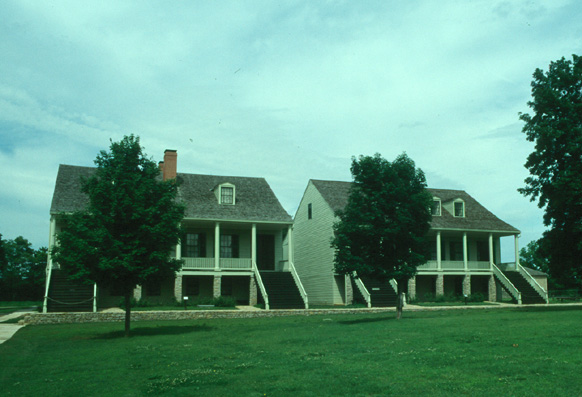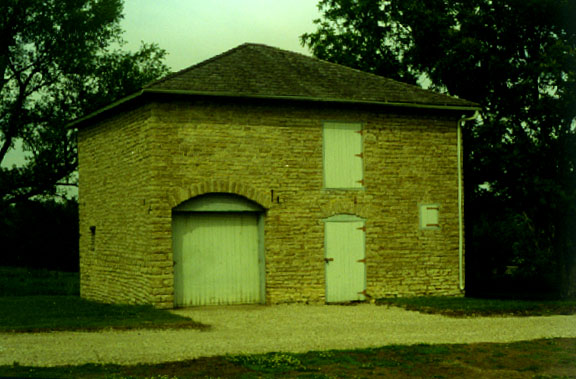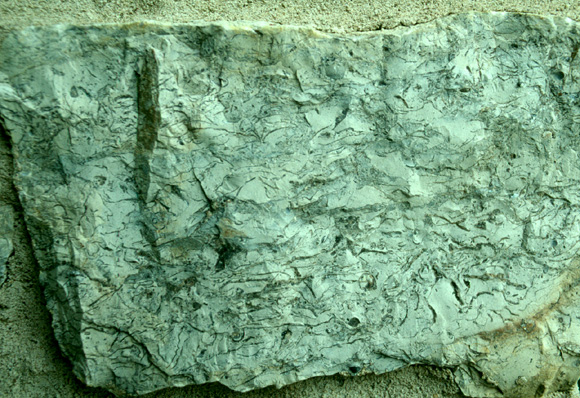|
The barracks, officers' quarters (top), carriage house (above) and other buildings at Fort Scott National Historic Site in Fort Scott, Kansas, are built of a distinctive limestone that formed on seafloors in the Pennsylvanian period (about 300 million years ago). The dominant fossil in these limestones is phylloid algae, which formed calcareous plates. The dark wavy sub-horizontal bands in the image below are cross-sections of these algal plates.
Many limestones of Pennsylvanian age contain fossils of phylloid algae, and Pennsylvanian strata can be found from Iowa to Texas in the midcontinent of the US. However, within that region, limestones so rich in phylloid algae are found only in southeastern Kansas, so that the stone used to build Fort Scott uniquely identifies the area near the fort and its like-named town.
|


